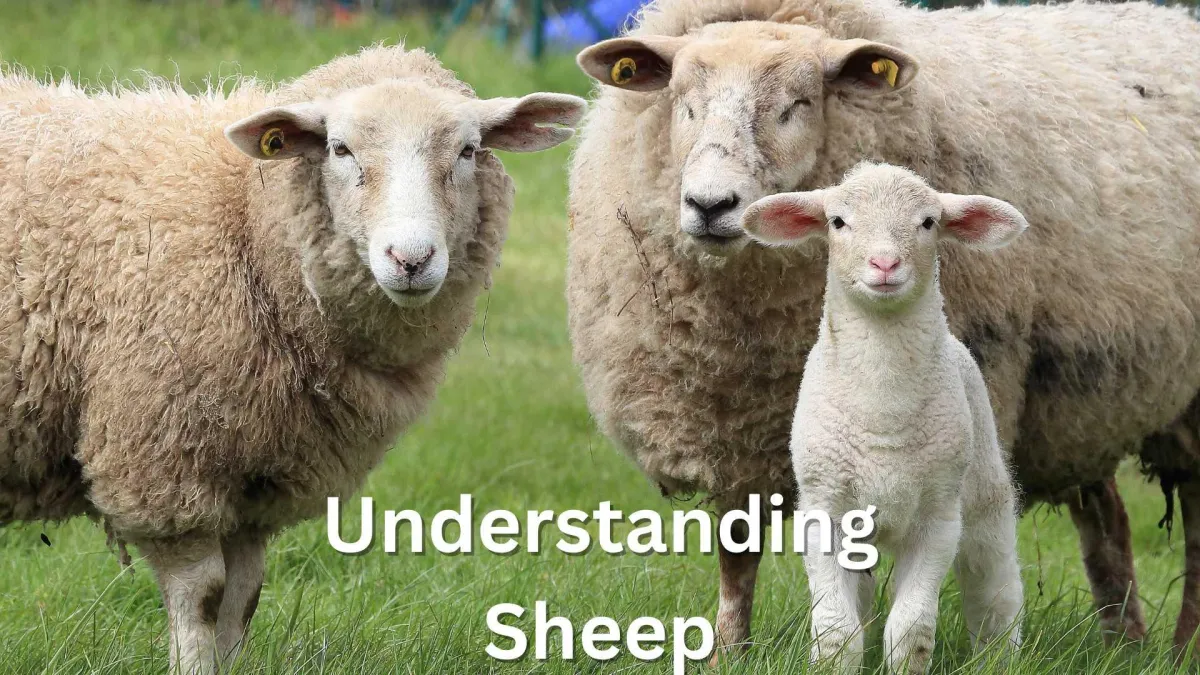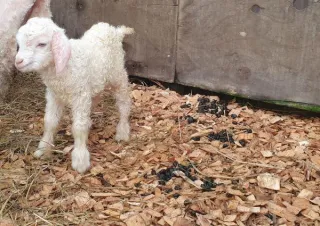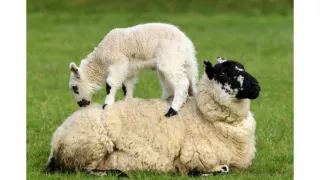Understanding Sheep

Behaviour, senses, and handling for the New Zealand lifestyle block
Sheep are among the most common animals on lifestyle blocks, but they’re often the least understood. While they’re seen as simple, even silly animals, their behaviour is anything but random. Sheep are prey animals with a powerful flocking instinct and highly developed senses. Understanding how they think and behave will make a big difference to how you manage them, and how they respond to you.
This guide draws from Dr Clive Dalton’s work on animal behaviour and welfare, bringing together the key facts and practical advice for handling sheep on small farms.
Senses: How Sheep Perceive the World
Vision
Sheep have excellent peripheral vision due to the placement of their eyes. Their field of view is around 270 to 320 degrees, allowing them to see almost everything around them without moving their heads. However, like cattle, they have poor depth perception and two small blind spots, directly behind and in front of them.
They can distinguish light from dark and detect movement well, but they can be startled by shadows, puddles, uneven surfaces, and sudden changes in contrast.
They also dislike bright lights and may refuse to enter dark spaces or move from light to shadow quickly.
Sheep have some colour vision but are most sensitive to contrast. Their ability to see in dim light is an advantage when grazing in the early morning or late evening.
Hearing
Sheep have sensitive ears and can detect a wide range of sounds. They’re especially alert to high-pitched or sudden noises, which can trigger panic in a flock. Sudden bangs, dogs barking, or shouting will easily unsettle sheep.
They can learn to recognise familiar voices, vehicles, or routine sounds like feed buckets. Calm, quiet handling makes a significant difference to their behaviour.
Smell
Sheep rely on scent for many aspects of social behaviour. They can distinguish between individuals by smell, including ewes recognising their lambs and rams detecting females in heat. New smells may cause sheep to hesitate or investigate more cautiously.
Daily Behaviour and Rhythms
Sheep divide their day between grazing, resting, and ruminating (chewing cud). Their routine is usually:
Early morning and late afternoon: Primary grazing periods
Midday and overnight: Resting and ruminating
Total daily lying time: 8–12 hours, ideally in a safe, dry, familiar place
They prefer to lie with other sheep around them and are reluctant to rest alone. Lying down is important for digestion and rest, if sheep aren’t lying down regularly, they may be stressed or in pain.
Sheep prefer dry ground and will avoid lying on wet or muddy soil. Their grazing patterns are highly routine-based, they often return to favourite spots at the same times each day unless disrupted.
Flocking and Social Behaviour
Sheep are strongly social animals with a tightly developed flock instinct. Separation from the flock causes stress and panic. A lone sheep may call out, run frantically, or become aggressive in unfamiliar surroundings.
They form stable social groups and recognise individuals within the flock. Some sheep form close pair bonds and will follow each other through yards or paddocks.
The flock instinct is the foundation of most handling strategies. Sheep follow one another instinctively, especially if one animal begins moving away from pressure. This means you can move a mob more easily than an individual, and why dogs, gates, and races are effective tools.
Leadership and Hierarchy
While sheep don’t have a clear dominance hierarchy like cattle or goats, some ewes will take a lead role in flock movement or alerting to danger. Age and experience often guide leadership
Communication
Vocalisation
Sheep use vocal sounds to communicate:
Ewes and lambs bleat to find one another
Loud bleating often signals distress or separation
Subtle bleats can indicate contentment, hunger, or unease
Sheep also respond to tone. Harsh or angry shouting causes alarm, while calm talking can reassure or settle a flock.
Body Language
Sheep communicate through posture, eye contact, and movement:
Raised heads and pricked ears indicate alertness or fear
Stamping feet may precede flight
Huddling or crowding together signals nervousness
Tail wagging in lambs usually means contentment or milk seeking
Breeding Behaviour
Oestrus in Ewes
Ewes come into season (heat) every 16–17 days during the breeding season. Signs of oestrus can be subtle, some ewes become restless or seek out the ram, others show little outward sign. Rams detect oestrus by scent and behaviour.
Rams
Rams can be aggressive during breeding season. They use the flehmen response (curling the upper lip) to detect pheromones and may guard individual ewes. Ram fights over dominance are common and can be dangerous.
Keep rams in secure paddocks during breeding and avoid unnecessary handling during peak rut. Rams recognise their handler but should never be fully trusted.
Handling and Yard Behaviour
Sheep prefer to move together, following one another closely. Use this to your advantage, if the lead sheep moves through a gate or race calmly, others will usually follow.
Flight Zone and Pressure
Sheep have a flight zone, a personal space that, if entered, causes them to move away. Understanding and using this space is key to low-stress handling.
Approach quietly from the side, stay at their level, and use steady pressure. Back off slightly to reward movement. Never force sheep head-on or use shouting or hitting.
Yard Tips
Stress and Temperament
Sheep are highly sensitive to stress. Poor handling, loud noise, rough dogs, or sudden changes in routine all cause fear and resistance.
Signs of stress include:
Panting
Vocalisation
Hesitation or freezing
Bolting or crashing into obstacles
Some breeds are naturally more nervous (e.g. Merinos), while others (e.g. Romneys) tend to be more settled. Temperament is shaped by genetics, early handling, and routine.
Final Thoughts
Sheep aren’t dumb, they’re cautious. Everything they do is about staying safe, staying with the group, and avoiding pain or fear. Once you understand how they see the world, their behaviour becomes more predictable, and your handling more effective.
The better you understand sheep, the better they’ll respond. And that makes for calmer yards, healthier animals, and a less stressful block for everyone.
More Resources
If you have or are planning to have sheep, here are some helpful resources:
What You Need to Know to Keep Sheep– A complete course on feeding, fencing, handling, day to day husbandry for New Zealand lifestyle farmers.
What You Need to Know to Keep Livestock – A practical course for anyone starting out with animals on a lifestyle block.
If you're looking at keeping more than just cattle, find out more here:
Understanding Cattle – Although cattle are larger they're actually very easy care compared to sheep.
Understanding Goats – Goats are a similar size to sheep but have very different needs and problems.
Understanding Poultry - Whatever other livestock you have, a backyard egg-producing flock is a must!
Back to Livestock & Pets
More articles on keeping sheep

What Your Animal's Poo Is Telling You
Learn how to interpret changes in your animal's faeces. From colour and texture to parasites and digestive disorders, these signs can help identify health issues early. ...more
The Basics ,Sheep Cattle Goats Pigs &Alpaca
July 22, 2025•4 min read

Sheep yard design
A tried and true design for sheep yards built by Bruce Binnie. ...more
Sheep
July 14, 2025•0 min read

Lameness in Livestock - Part 3: Lameness in Sheep, Goats, Cattle and Deer
Lameness in sheep, goats, cattle, and deer is often caused by infections like foot scald and foot-rot. Learn how to treat and prevent these issues on your lifestyle block. ...more
The Basics ,Sheep Cattle Goats &Other species
May 02, 2025•2 min read

Quarantining New Animals - What, When, and How
Preventing the spread of disease on your farm starts with strong biosecurity measures. Quarantining new animals for 2-3 weeks helps detect infections, clear parasites, and ensure a healthy flock. Lear... ...more
The Basics ,Sheep Cattle Goats &Pigs
March 17, 2025•8 min read

Dealing with an emergency (while waiting for the vet)
When an emergency strikes your livestock, quick action is key. While waiting for the vet, follow these essential steps to keep your animal safe, calm, and stable. Learn how to secure the patient, mana... ...more
The Basics ,Sheep Cattle Poultry &Pigs
February 24, 2025•8 min read

A New Lifestyle Farmer’s Guide to Fecal Egg Counts (FECs)
Learn how to use Fecal Egg Counts (FECs) to manage livestock parasites effectively. This guide covers what FECs are, their pros and cons, equipment needed, step-by-step procedures, and tips for adjust... ...more
The Basics ,Sheep Cattle &Goats
January 09, 2025•7 min read
Support & Legal
Get Rural Tips & Seasonal Updates
Subscribe to the LSB monthly newsletter.
© 2025 Lifestyleblock.co.nz | LSB Ltd Proudly off-grid and NZ-owned

